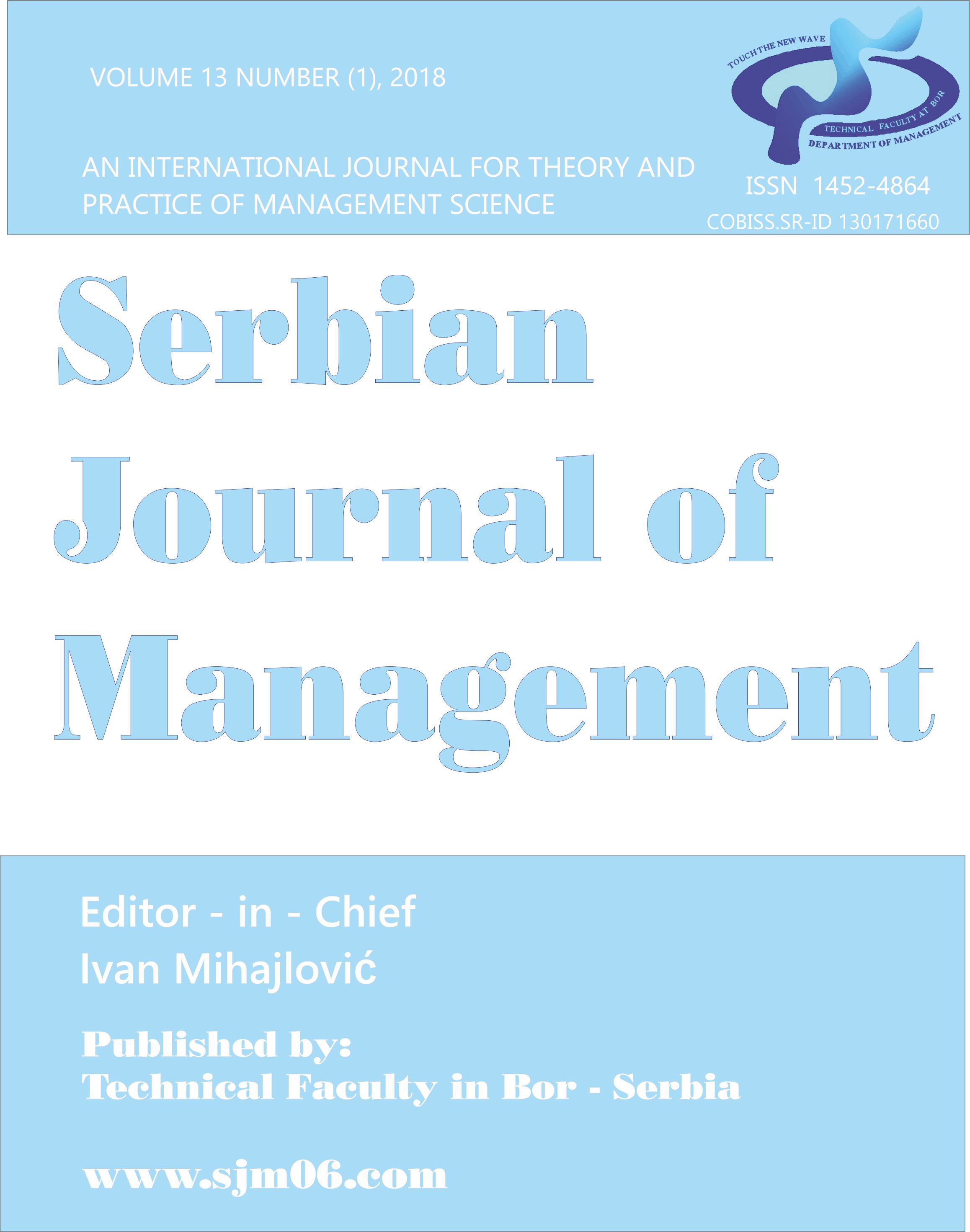Economic analysis of the project of warehouse centralization in the paper production company
Abstract
In the modern conditions, business requires constant rationalization of all activities and processes that occur in the logistics system. One of the preconditions for ensuring the competitiveness in the market is to manage the own performance. This paper presents research that relates to the project of centralization of the warehouse in the company of paper production. Currently, any production facility has its own warehouse that is, through executed decomposition, proved like a poor solution. Any project requires certain investment funds, which are in this case over half million EUR, because it is a large and complex logistics company that employs about one thousand workers. The focus of this paper is an economic analysis of the project of centralization of warehouse. The new centralized system gives better results in the comparison with the current system of decentralization. Considering the savings, which are realized by switching to a centralized warehouse system, and required investment funds, repayment period of the same is slightly less than five years, what is relatively a short period.
References
Baker, P. (2007). An exploratory framework of the role of inventory and warehousing in international supply chains. The International Journal of Logistics Management, 18 (1), 64-80.
Ballis, A. (2006). Freight villages: warehouse design and rail link aspects. Transportation Research Record: Journal of the Transportation Research Board, 1966 (1), 27-33.
Christopher, M. (2005), Logistics and Supply Chain Management, London, UK: Prentice Hall.
Croxton, K.L. & Zinn, W. (2005). Inventory considerations in network design. Journal of Business Logistics, 26 (1), 149-68.
Das, C. & Tyagi, R. (1997). Role of inventory and transportation costs in determining the optimal degree of centralization. Transportation Research: Part E, 33 (3), 171-9.
De Koster, M.B.M. (1998). Recent developments in warehousing. Working Paper, Rotterdam School of Management.
Faccio, M. (2015). Service spare parts versus production parts: a centralised or decentralised warehouse?. International Journal of Logistics Systems and Management, 20(4), 516-535.
Gattorna, J.L. & Walters, D.W. (1996). Managing the Supply Chain: A Strategic Perspective, London, UK: Macmillan Press.
Grabara, J., Kolcun, M., & Kot, S. (2014). The role of information systems in transport logistics. International Journal of Education and Research, 2 (2), 1-8.
Gunasekaran, A., & Ngai, E.W. (2004). Information systems in supply chain integration and management. European Journal of Operational Research, 159 (2), 269-295.
Gunasekaran, A., Marri, H.B. & Menci, F. (1999). Improving the effectiveness of warehousing operations: a case study. Industrial Management & Data Systems, 99 (8), 328-339.
Hackman, S.T. (2008). Efficiency Analysis of Warehouse and Distribution Operations. Production Economics: Integrating the Microeconomic and Engineering Perspectives, 207-220. Chicago, IL: USA, Springer.
Johansson, R., & Peters, D. (2014). Investigation of the effects of possible centralisations for ABB sites in the Västerås area, Linköping University.
Lämsä, R., & Mattsson, S. (2014). Investigation of buying in retail companies Understanding the effects of a central warehouse. (http://lup.lub.lu.se/luur/download?func=downloadFile&recordOId=4696019&fileOId=4696033)
McGinnis, M.A. and Kohn, J.W. (1998). Warehousing, competitive advantage, and competitive strategy. Journal of Business Logistics, 9 (22), 32-54.
Petersen II, C.G. (1999). The impact of routing and storage policies on warehouse efficiency. International Journal of Operations & Production Management, 19 (10), 1053-1064.
Radivojević, G. M., Miljuš, M. D., & Vidović, M. B. (2007). Logistic controlling and performance, Belgrade, Serbia: Faculty of Transportation, University of Belgrade. (In Serbian)
Stock, J.R., & Lambert, D.M. (2001). Strategic logistics management (4th ed.). Boston, MA, USA: McGraw-Hill/Irwin.
Teunter, R.H., Babai, M.Z., & Syntetos, A.A. (2010). ABC classification: service levels and inventory costs. Production and Operations Management, 19 (3), 343-352.
Vollmann, T.E. Berry, W.L., & Whybark, D.C. (1997). Manufacturing planning and control systems (4th ed.), Boston, MA, USA: McGraw-Hill/Irwin.
The Author wishes to submit the Work to SJM for publication. To enable SJM to publish the Work and to give effect to the parties’ intention set forth herein, they have agreed to cede the first right to publication and republication in the SJM Journal.
Cession
The Author hereby cedes to SJM, who accepts the cession, to the copyright in and to the paper.
The purpose of the cession is to enable SJM to publish the Work, as first publisher world-wide, and for republication in the SJM Journal, and to grant the right to others to publish the Work world-wide, for so long as such copyright subsists;
SJM shall be entitled to edit the work before publication, as it deems fit, subject to the Authors approval
The Author warrants to SJM that:
- the Author is the owner of the copyright in the Work, whether as author or as reassigned from the Author’s employee and that the Author is entitled to cede the copyright to SJM;
- the paper (or any of its part) is not submitted or accepted for publication in any other Journal;
- the Work is an original work created by the Author;
- the Author has not transferred, ceded, or assigned the copyright, or any part thereof, to any third party; or granted any third party a licence or other right to the copyright, which may affect or detract from the rights granted to SJM in terms of this agreement.
The Author hereby indemnifies the SJM as a body and its individual members, to the fullest extent permitted in law, against all or any claims which may arise consequent to the warranties set forth.
No monetary consideration shall be payable by SJM to the Author for the cession, but SJM shall clearly identify the Author as having produced the Work and ensure that due recognition is given to the Author in any publication of the Work.
Should SJM, in its sole discretion, elect not to publish the Work within 1 year after the date of this agreement, the cession shall lapse and be of no further effect. In such event the copyright shall revert to the Author and SJM shall not publish the Work, or any part thereof, without the Author’s prior written consent.

